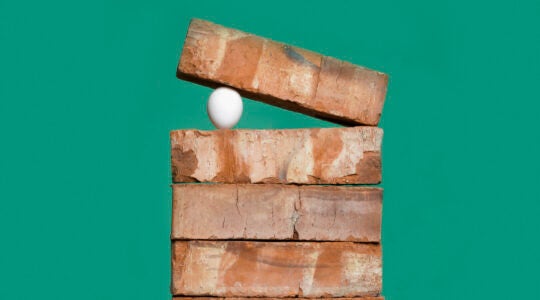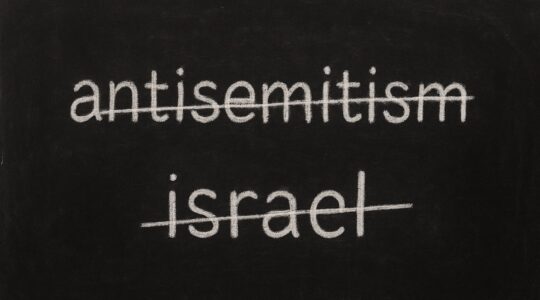Just in the nick of time, with depressing headlines piling up, the annual World Happiness Report has come out. And lo and behold, Israel is still perched at No. 11 among the 155 countries surveyed.
Just to place that in perspective, the U.S. checks in at No. 14, and those countries ahead of Israel include places encircled by water, like Australia, Iceland and New Zealand and an assortment of Scandinavian nations, where the closest they’ve come to war lately was Prince Hans Westergaard’s royal coup in Disney’s “Frozen.”
And then you have Israel: calamitous, terror-filled and polarized, with the meshuggenah bus drivers and rude bank clerks. That Israel. It’s also the country where the tomatoes are more flavorful, the falafel crispier, the sunsets more spectacular, the people more welcoming, the children more playful and where life is, simply, sweeter.
Dan Barber, a chef and writer, wrote about an experiment he ran on a mokum carrot, which he was able to grow outdoors in the middle of a cold February. When it was ripe, he ran something called a Brix test, which measures the sugar content. It came to 13.8. Barber compared it to an organic carrot purchased from a Whole Foods, presumably grown in a much less hostile environment. That carrot measured 0.0. on the same scale.
No sugar detectable.
Why such a dramatic difference? He explains that the mokum carrot was feverishly converting its starches to sugars because, in those hard freezes, it didn’t want ice crystallization.
Why?
Because if it gets ice crystallization, it dies.
“What you’re tasting is sweetness,” Barber stated. “But what the plant, the root vegetable is telling you, is that it doesn’t want to die.”
Maybe that’s why we make such a big tzimmis about tzimmis on Jewish holidays. The sweetness we’re tasting is life itself.
Have you ever noticed how the sweetest things are produced under the greatest duress? The State of Israel, 11th happiest country on earth, which has never known a single day of complete peace, is our proof.
I think Americans are becoming mokum-like too. We’re appreciating life more because we’ve peered into the abyss and seen how fragile freedom can be. We’ve experienced life at the limits — and when lived at the limits, life is simply sweeter. We’re taking our challenges and photosynthesizing them into love — and not simply your garden-variety love. We’re talking about “love is love is love is love is love!” Americans can’t sleepwalk through life anymore, and in a perverse way, it’s making us happier.
I’ve been captivated by a book that I picked up recently, a bestseller sharing Danish secrets to happy living. It’s called “The Little Book of Hygge,” by Meik Wiking, CEO of the Happiness Research Institute in Copenhagen. “Hygge,” incidentally, is pronounced “hoo-gah,” and is translated as comfort, togetherness and well-being.
Predictably, since this is Denmark, the path to hygge is paved with hot drinks, sweet pastries (they don’t call them “Danish” for nothing), board games, woolen socks, bike rides, photo albums and cozy fireplaces. Oh yes, and candles. Lots of candles.
When you take a closer look at the keys to Danish happiness, it’s easy to see why Israel scores so highly. Factor in the difference in climate (meaning, factor out the fireplaces) and there are lots of similarities.
Let’s start with the candles. Twenty-eight percent of Danes light at least one candle every day, an amazing number; but on Sabbaths and holidays at least, Israel might give Denmark a run for its money. The warmth generated by lit candles cannot really be measured in pounds of wax. As poet Marge Piercy describes in “Wellfleet Shabbat,”
The sweet beeswax candles flicker
and sigh, standing between the phlox and the roast chicken. The wine shines its red lantern of joy.
One of my favorite Philip Roth passages is one of his earliest, from the short story “Conversion of the Jews,” where the boy Ozzie watches his mother lighting Shabbat candles:
When his mother lit the candles she would move her two arms slowly toward her, dragging them through the air…. And her eyes would get glassy with tears…. His mother was a round, tired, gray-haired penguin of a woman whose gray skin had begun to feel the tug of gravity and the weight of her own history. Even when she was dressed up she looked like a chosen person. But when she lit candles she looked like something better; like a woman who knew momentarily that God could do anything.
When Jews wish one another a happy Passover in a few days, they’ll say “Hag Sameyach,” but they could just as easily say “Hygge Samayach,” because, for all its obsessiveness, toil and gastric irritation, there is no hygge-er celebration on the Jewish calendar than Pesach.
Wiking’s Hygge wish list is a virtual seder checklist. Aside from candles (check), books (check) and cushions (check), he advises would-be hygge-ophiles to “think tactile” and focus less on how things look than how things feel. He notes, “Letting your fingers run across a wooden table, over a warm ceramic cup or over the hairs of the skin of a reindeer is distinctly different from being in contact with something made of steel, glass or plastic.”
Passover is less about what we eat than what we touch, particularly the rutted topography of matzah, the silky matzah covers, the cool silver wine cups (or hand-made ceramic ones) and the unmistakable texture of spoon slicing through a firm matzah ball.
Beyond the look, taste and feel, there is nothing that calls us home more than the mingling smells of ground chrain, hard-boiled egg, bubbling soup and fresh spring flowers.
While Jews complain endlessly about Passover, the secret sauce to our happiness is distinctly artisanal, pungent with horseradish, charred from slightly burnt shmurah matzah, sweet with carrots, softly illumined by candles and best served warm on a night different from all other nights.
And on that night, surprise of surprises, Jews just might be the happiest people on earth.
Rabbi Joshua Hammerman is spiritual leader of Temple Beth El in Stamford, Conn.
The New York Jewish Week brings you the stories behind the headlines, keeping you connected to Jewish life in New York. Help sustain the reporting you trust by donating today.




